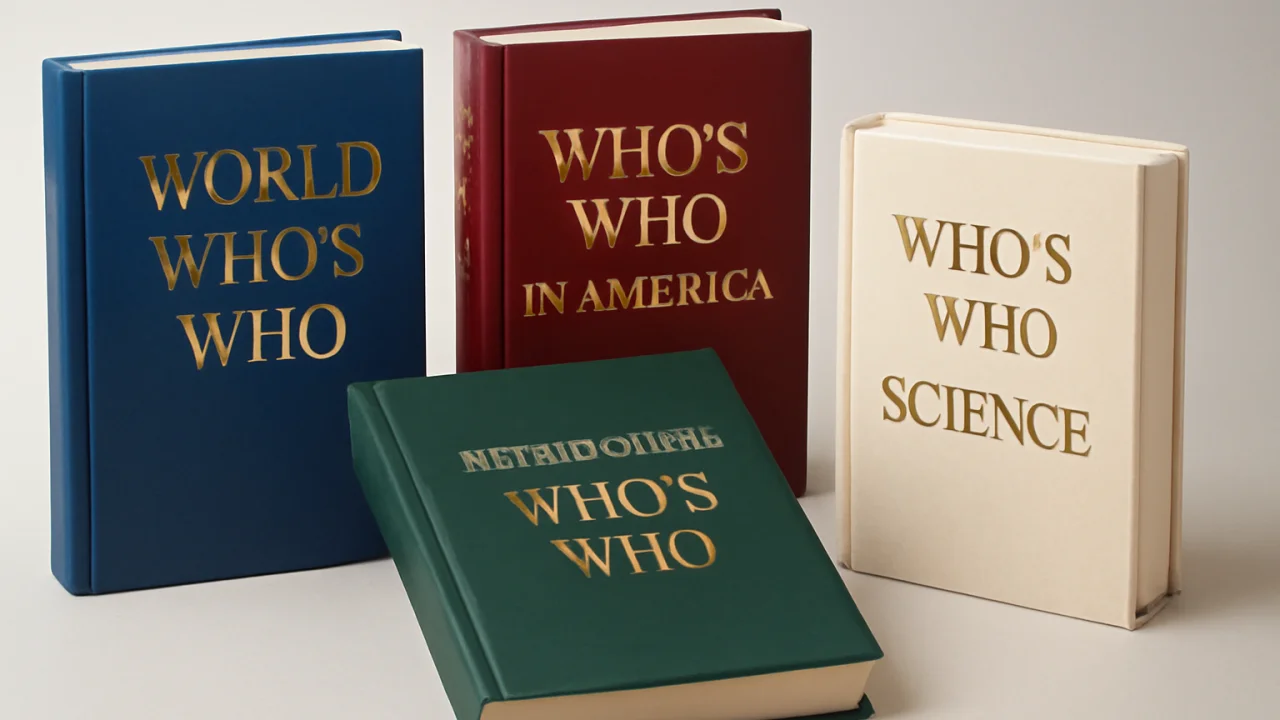
Who’s Who? A Comprehensive Guide to Understanding Notable Figures and Their Impact
📑 Contents
Who’s Who? A Comprehensive Guide to Understanding Notable Figures and Their Impact
The phrase “Who’s Who” is synonymous with directories that catalogue prominent individuals in various fields. From business leaders and politicians to artists and academics, these directories offer a snapshot of influence and achievement. But what exactly is a Who’s Who, how did it originate, and why does it matter today? In this comprehensive guide, we’ll unravel the history, purpose, and modern significance of Who’s Who directories, highlight their impact, and offer practical advice on navigating these listings.
Understanding Who’s Who: Definition and Origins

A “Who’s Who” is a reference work—traditionally a printed directory, now often digital—that lists notable individuals and provides biographical details about their lives and contributions. The first publication of this kind, Who’s Who, appeared in the United Kingdom in 1849, aiming to catalog influential figures in British society. Over time, the concept spread worldwide, spawning numerous national, regional, and industry-specific editions.
These directories serve as authoritative resources for journalists, researchers, employers, and anyone interested in learning about leaders and achievers. They are often updated annually, ensuring that the information remains current and relevant.
Types of Who’s Who Directories

The Who’s Who concept has evolved to cover a broad spectrum of sectors and interests. Here are some of the most common types:
- National Directories: Such as Who’s Who in America or Who’s Who in India, listing influential people from across a country.
- Industry-Specific Editions: Focusing on fields like medicine, law, business, or the arts.
- Academic and Professional Listings: Highlighting scholars, scientists, and specialists.
- Regional Compilations: Narrowing the scope to cities, states, or provinces.
- Online Platforms: Modern web-based directories offering searchable, updated profiles.
The Role and Importance of Who’s Who Directories

Who’s Who directories play several important roles:
- Recognition: Inclusion signifies acknowledgment of an individual’s achievements or influence.
- Reference: They provide reliable information for media, employers, and researchers.
- Networking: Many editions facilitate connections among listed individuals.
- Historical Record: They act as archives, preserving the legacy of prominent figures.
Being listed can boost an individual’s reputation, open professional doors, or even lead to new opportunities.
How Are Individuals Selected?
Selection criteria vary between directories, but generally include:
- Demonstrated leadership or achievement in a field
- Peer or editorial nominations
- Public recognition or awards
- Contributions to society, research, or innovation
Some directories maintain strict editorial oversight, while others may rely on self-submitted nominations or even paid listings, so it’s important to consider the credibility of the publication.
Modern Usage: Digital Who’s Who and Social Networks
With the rise of the internet, Who’s Who listings have shifted online. Modern platforms often allow for real-time updates and greater accessibility. However, the digital age also brings challenges:
- Verification: Ensuring listed information is accurate and up-to-date.
- Scams: Some dubious directories solicit fees for inclusion without rigorous editorial standards.
- Competition: Social networks like LinkedIn offer alternative ways to showcase professional achievements.
Despite these challenges, reputable Who’s Who directories remain valuable tools for career advancement and public recognition.
Comparing Leading Who’s Who Directories
Here’s a comparative look at some of the most well-known Who’s Who directories worldwide:
| Directory | Founded | Scope | Selection Process | Format |
|---|---|---|---|---|
| Who’s Who (UK) | 1849 | British society | Editorial selection | Print & Online |
| Who’s Who in America | 1899 | United States | Editorial selection | Print & Online |
| Marquis Who’s Who | 1898 | Global | Editorial & nominations | Print & Online |
| Debrett’s People of Today | 1988 | UK | Editorial selection | Print & Online |
| International Who’s Who | 1935 | International | Editorial selection | Print & Online |
How to Use a Who’s Who Directory Effectively
Whether you’re researching a public figure, verifying credentials, or seeking networking opportunities, here are some practical tips:
- Check Credibility: Use established, reputable directories. Be wary of pay-to-play listings.
- Cross-Reference: Compare information across multiple sources for accuracy.
- Use Search Functions: Digital editions often allow detailed searches by name, field, or achievement.
- Respect Privacy: Remember that not all information is public or current—verify before reaching out.
Controversies and Criticisms
While Who’s Who directories aim to celebrate achievement, they’re not without controversy. Some criticisms include:
- Exclusivity: Critics argue that some editions reinforce social hierarchies or overlook emerging talent.
- Commercialization: The rise of fee-based listings has led to questions about the integrity of certain publications.
- Accuracy: Self-submitted or outdated information may undermine credibility.
For these reasons, it’s essential to approach Who’s Who listings with a discerning eye, particularly when evaluating lesser-known publications.
Frequently Asked Questions
- What does it mean to be listed in a Who’s Who directory?
- Being listed generally signifies recognition for professional or social achievements. It can enhance personal credibility and open doors for networking or career advancement.
- Are all Who’s Who directories reputable?
- No. While many are respected reference works, some operate on a pay-to-list model with minimal editorial oversight. Always check the directory’s reputation before relying on its content.
- Can you request to be included in a Who’s Who?
- Some directories accept nominations or self-submissions, but reputable editions usually maintain editorial control and strict selection criteria.
- Are Who’s Who listings public information?
- Most are published for public reference, but the level of detail and privacy considerations can vary. Always use the information responsibly.
- How are Who’s Who directories different from LinkedIn?
- Who’s Who directories are curated reference works focusing on notable achievement, while LinkedIn is a user-driven professional network open to anyone. The former often involves editorial vetting; the latter is self-managed.
Summary
Who’s Who directories have played a significant role in documenting achievement and influence for over 170 years. While their format and function have evolved with technology, their core purpose remains the same: to recognize and record the stories of people shaping society. Whether you’re seeking information, recognition, or connection, understanding the origins, uses, and limitations of Who’s Who can help you navigate the world of notable figures with confidence and discernment.











